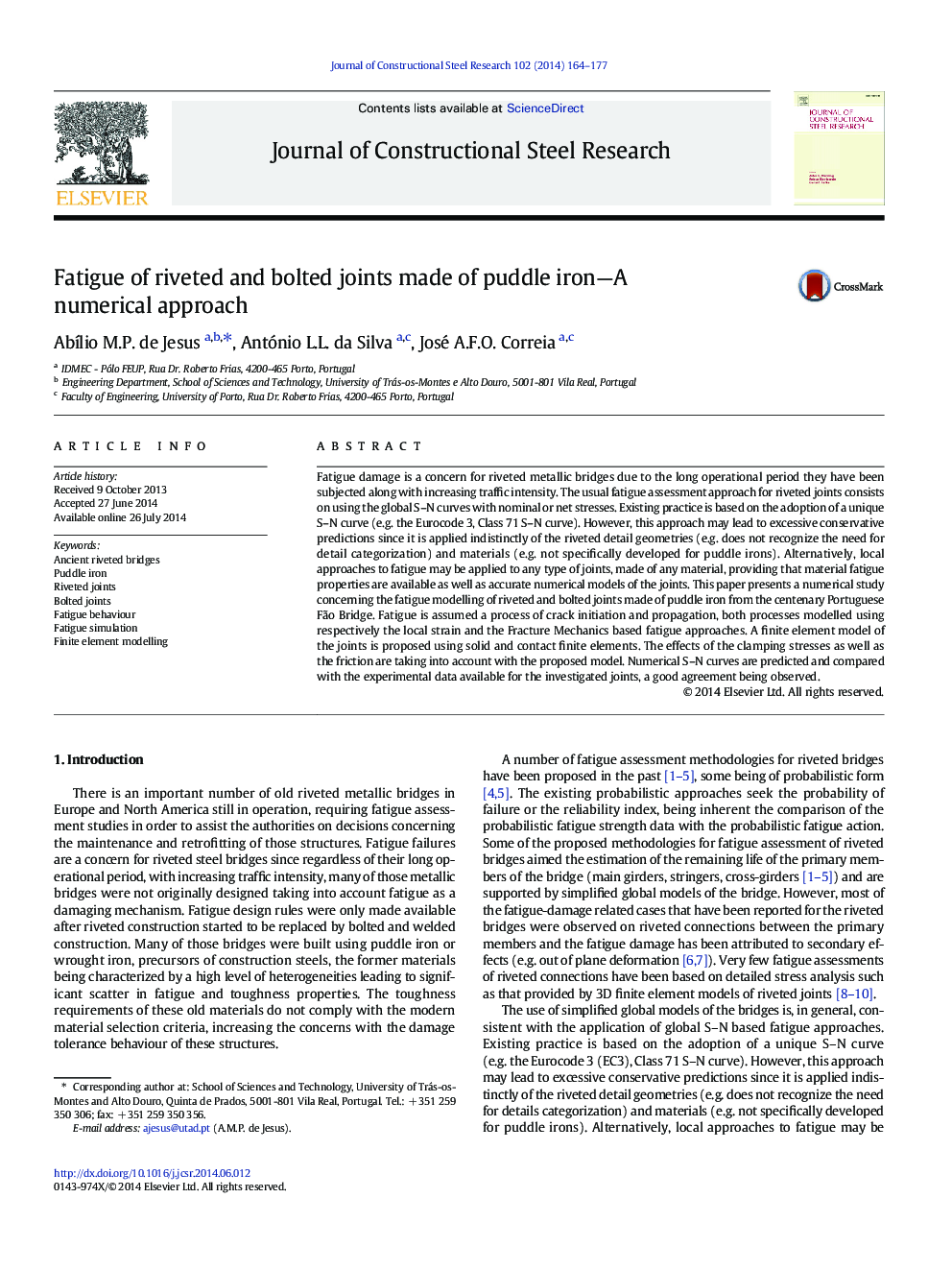| کد مقاله | کد نشریه | سال انتشار | مقاله انگلیسی | نسخه تمام متن |
|---|---|---|---|---|
| 284608 | 509154 | 2014 | 14 صفحه PDF | دانلود رایگان |

• Fatigue modelling of a riveted and a bolted joint made of puddle iron is proposed.
• Fatigue damage is assumed a process of crack initiation and propagation.
• Local strain approach and Fracture Mechanics supported on 3D FEM modelling proposed
• Crack initiation criterion based on a 0.5 mm crack was demonstrated to be adequate.
• Crack initiation was dominant for the riveted and non-preloaded bolted joints.
Fatigue damage is a concern for riveted metallic bridges due to the long operational period they have been subjected along with increasing traffic intensity. The usual fatigue assessment approach for riveted joints consists on using the global S–N curves with nominal or net stresses. Existing practice is based on the adoption of a unique S–N curve (e.g. the Eurocode 3, Class 71 S–N curve). However, this approach may lead to excessive conservative predictions since it is applied indistinctly of the riveted detail geometries (e.g. does not recognize the need for detail categorization) and materials (e.g. not specifically developed for puddle irons). Alternatively, local approaches to fatigue may be applied to any type of joints, made of any material, providing that material fatigue properties are available as well as accurate numerical models of the joints. This paper presents a numerical study concerning the fatigue modelling of riveted and bolted joints made of puddle iron from the centenary Portuguese Fão Bridge. Fatigue is assumed a process of crack initiation and propagation, both processes modelled using respectively the local strain and the Fracture Mechanics based fatigue approaches. A finite element model of the joints is proposed using solid and contact finite elements. The effects of the clamping stresses as well as the friction are taking into account with the proposed model. Numerical S–N curves are predicted and compared with the experimental data available for the investigated joints, a good agreement being observed.
Journal: Journal of Constructional Steel Research - Volume 102, November 2014, Pages 164–177